Video Shows How to Avoid Shark Attack. “Don’t Splash, Always Make Eye Contact, Look Like Predator”
These tips could save your life if you ever encounter a shark.
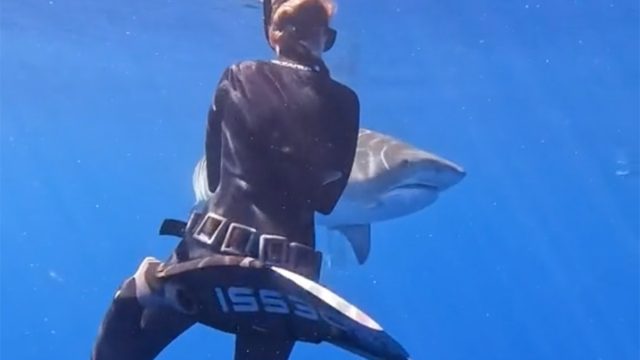
While shark attacks are quite uncommon, getting bitten by one of the large, sharp-toothed fish is one of the biggest fears on the shoreline. Every year there are a few highly profiled shark attacks, resulting in everything from harmless nibbles to loss of limbs and even death. Here’s the good news: Per Florida Museum of Natural History’s International Shark Attack File, there were only 137 recorded shark attacks, 73 of which were classified as “unprovoked,” in the world. In 2021 there were also 9 unprovoked shark bite fatalities. While the chances of being the victim of a shark attack are slim, if you do encounter one of the predators in the ocean there are a few things you can do to avoid being shark bait, according to a professional diver.

Kayleigh Grant, 34, founder and operator of Kailua-Kona, Hawaii-based Kaimana Ocean Safari, shared a video with her TikTok followers, detailing how to avoid a shark attack. Her videos demonstrating how to safely get away from sharks are going viral. Keep reading to see the video and learn some of the tips.

Even though it might be natural instinct, Grant says one of the worst things you can do is splash and try to swim away. “Splashing and swimming away imitates what prey does. When we’re dealing with top predators like sharks, we also want to act like a predator,” she says in one video.
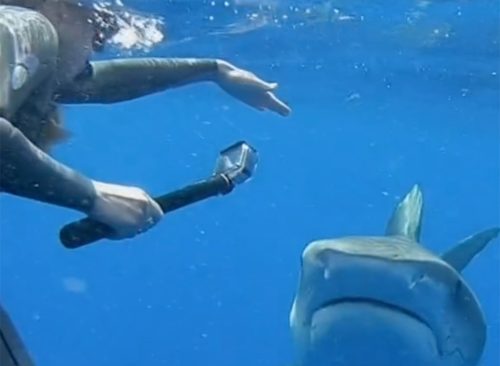
“What you actually want to do is not splash, turn around, face the animal, and maintain eye contact,” she continued. “With tiger sharks, you can place your hand on the top of their head, press down gently, and that will redirect them away from you.”

In the video she follows the suggestions, making eye contact and looking it in the eye. The shark then swims away.
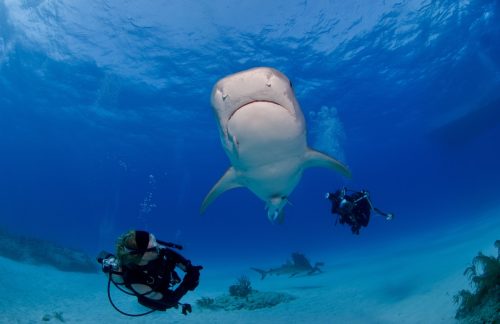
In another video, she pointed out that sharks are “likely just investigating” when they approach her and have no intention of biting. “This shark was swimming right towards me, but as soon as I turn my body around, face the animal, [and] make eye contact, it decides to turn off and swim away,” she says. “Making eye contact is more intimidating and is what other predators do.” She adds: “’Making eye contact is the number one rule when shark diving!”
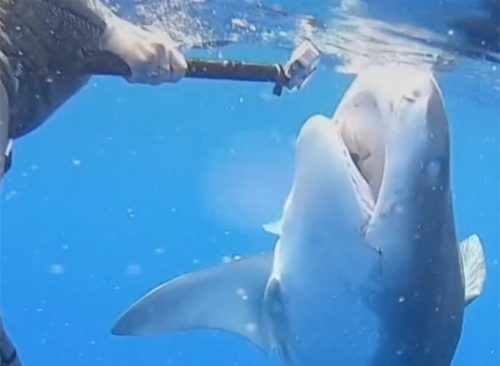
Grant was also asked what she would do if a shark opened its mouth and came at her. “This is such a rare situation that I only have one video that I can show you,” she said. “As the shark comes in, I go to redirect it. It decides to open its mouth, so I remove my hand from that area and place my hand on a different area of the shark,” she continued. “Here I was focused on getting my body to the side of the shark, away from the shark’s mouth. They are still wild animals, and they are totally unpredictable.”

She also revealed the truth about a common misconception that sharks are attracted to human blood. “When you dive for a living, you definitely enter the ocean with plenty of cuts and scrapes, and I’ve been around sharks while bleeding a bit and there is no reaction,” she said in an interview with KHON. “’We don’t smell or taste like their natural food source which is fish!”
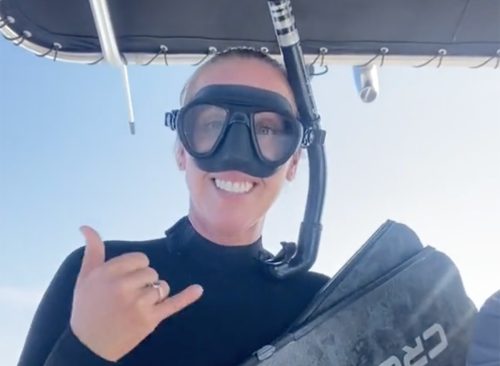
Grant also revealed some additional tips. “The best way to do that is to stay calm, don’t splash, maintain eye contact, and if one comes up to you, try putting your fins or camera between you and them,” she said in the interview.”Don’t surf or swim in murky waters or after big rainfall, don’t swim near someone actively fishing or harbor mouths, and swim and surf in groups.”
@mermaid.kayleigh *I am a trained professional do not attempt* #makingeyecontact is the number one rule when #sharkdiving! 👀 That is not to say this #shark would have come in for a bite.. likely just investigating. But you can see that turning around intimidated this #tigershark. Sometimes that’s all it takes & you don’t need to touch! #savesharks #predator #hawaii #ocean #sharkdive #sharkdiver ♬ Fallen down – Slowed – 「Incørrect」














